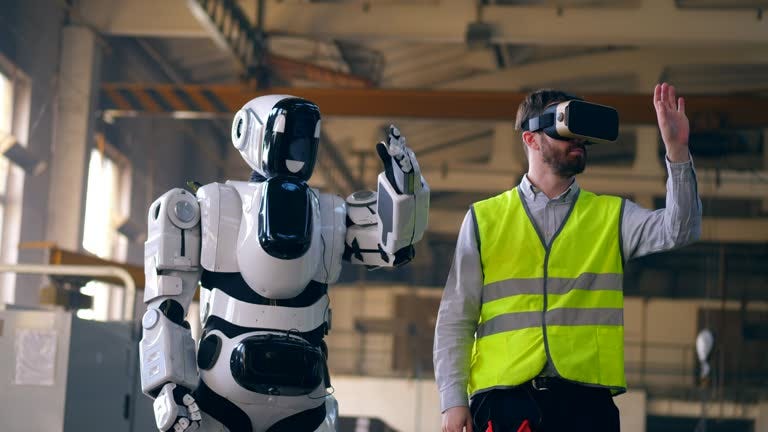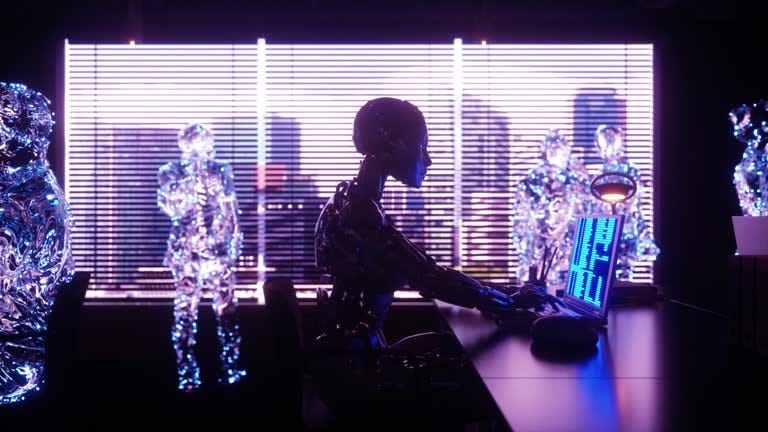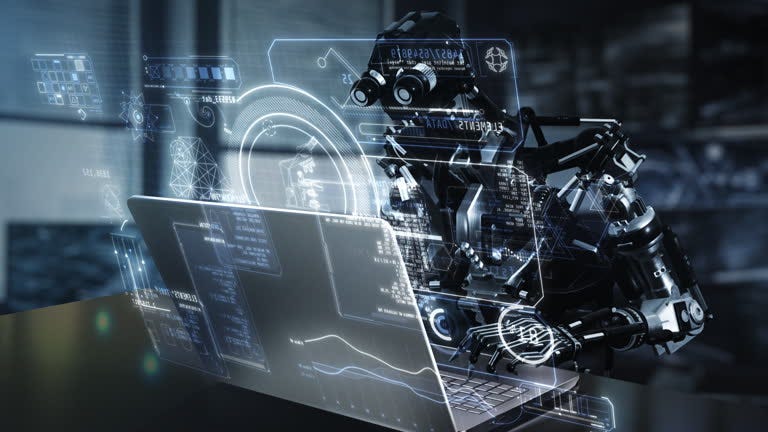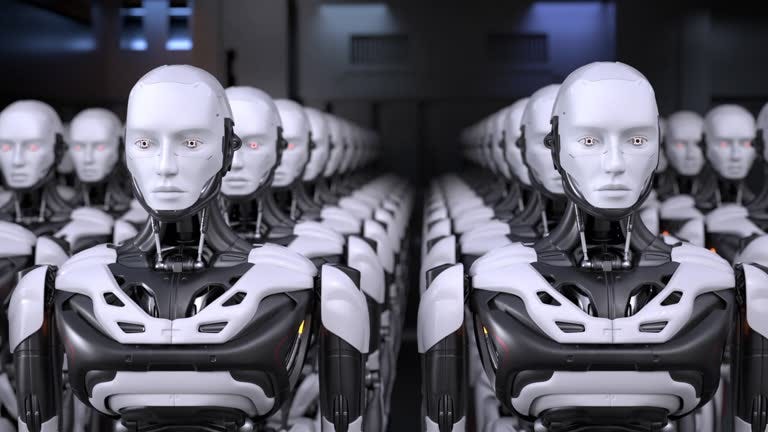Humanoids in Human Spaces: From Prototype Theater to P&L
Humanoid robots—systems that combine human-scale embodiment with natural interaction—are shifting from staged demonstrations to dependable capacity. The market stood near a billion dollars in 2024 and is forecast to exceed $22 billion by 2032, compounding at roughly 49 percent. Behind the headline growth is a practical story: compute has caught up to the demands of embodied AI; mechatronics now support bipedal and wheeled mobility; and enterprises want automation that works where people already work—through doorways, along aisles, into elevators, and around the public.
In this paper, we identify where value will concentrate first, what capabilities will distinguish winners, how the competitive map is likely to evolve, and which near-term decisions raise the odds that deployments move from pilots to production economics. The throughline is simple: treat humanoids not as futuristic mascots but as modular platforms that shoulder measurable work within human environments—under conservative safety envelopes, with privacy by default, and with service models that guarantee uptime rather than novelty.
Why growth is accelerating now
Labor and capability gaps. Many sectors face chronic staffing shortfalls, skill mismatches, and rising service expectations. Robots that handle repetitive, non-license tasks or structure low-risk human interactions can return minutes to clinicians, teachers, and frontline associates.
Human-environment compatibility. Refitting a hospital, warehouse, or store for traditional automation is costly and slow. Humanoid platforms can exploit the world as built—steps, handles, corridors, shelving—compressing time to deploy and lowering change-management barriers.
Software leverage. Multimodal models, robust on-edge perception, and mature natural language pipelines let robots handle varied requests and edge cases. Fleet orchestration and enterprise APIs tie robots into work queues, access control, elevators, and inventory systems.
Component maturity. Safer actuators, high-fidelity depth/rgb sensing, tactile skins, and better battery density/charging reduce failure risks and enable multi-shift duty cycles.
What will actually unlock spend
AI-robotics integration. Reliable perception, planning, and on-device reasoning that meets latency budgets and keeps data local.
Healthcare and eldercare. Patient flow, non-clinical logistics, vitals triage, rehab coaching, and companionship—each bounded by strict safety and privacy standards.
Retail and hospitality. Queue busting, multilingual concierge, inventory spot checks, and guided assistance that respects proxemics and brand tone.
Education and training. Classroom aides, language tutors, and social-skills coaches with age-appropriate HRI and easy teacher controls.
R&D capital. Public and private funding into sensing, safe mobility, manipulation, and interaction standards.
Component ecosystems. Standardized heads, end-effectors, and battery packs that shorten integration and certification.
Where budgets will land
By component
Hardware: frames, actuators, sensors, power systems, and end-effectors; emphasis on durability, field serviceability, and safety caps.
Software: autonomy stacks, speech/NLP and HRI layers, teleoperation, fleet orchestration, analytics, and constraint/safety engines.
Services: site surveys, deployment and integration, training, maintenance, and outcome assurance baked into SLAs.
By motion type
Biped: maximum compatibility with human spaces and strongest “presence,” but with higher mechanical and controls complexity.
Wheel-driven: simpler mechanics, better endurance, often easier to certify—frequently the pragmatic enterprise choice for near-term ROI.
By application
Healthcare, education, retail/hospitality, defense/public safety (non-combat), domestic/personal assistance, research/space exploration.
Adoption patterns and constraints
North America: strong developer ecosystems, hospital pilots that emphasize privacy-preserving edge inference, and enterprise buyers who value outcome-based service models.
Europe: public procurement in education/hospitality; strict safety and privacy emphasis; preference for open standards and auditability.
Asia-Pacific: fastest growth, underpinned by industrial champions, scale manufacturing, and eldercare demand; retailers adopt for store operations and customer service.
Middle East: smart-city programs and hospitality anchors; interest in security and public-space services with clear governance.
Where differentiation will emerge
Platform portfolios, not one-offs. Expect vendors to field both wheeled and bipedal variants on a shared software stack and peripherals—selecting form factor to match risk, duty cycle, and environment.
Safety envelopes as features. Velocity/force caps, fall prediction and mitigation, tactile skins, proactive obstacle negotiation, and intuitive e-stops move from engineering details to procurement criteria.
Open ecosystems. Standard I/O, SDKs, simulators, ROS-compatible middleware, and app marketplaces invite third parties to build workflow packs and accessories, compounding value.
Service wraps. Uptime SLAs, hot-swap spares, remote diagnostics, and operator training mark the shift from “robot sale” to “reliable capacity.” Robots-as-a-Service (RaaS) models align incentives with delivered work.
Domain packs. Pre-built, safety-bounded workflows—clinic reception, ward rounds, hotel concierge, store greeter—map tasks to KPIs and shorten time-to-value.
Enterprise use cases: beyond the demo floor
Healthcare
Patient flow: check-in, wayfinding, escort, discharge onboarding.
Team extender: medication reminders, light rehab coaching under clinician scripts, room tasks that don’t require licensure.
Logistics: specimen/medication runs, device couriering across campuses.
Retail & hospitality
Front-of-house: multilingual concierge, dynamic queue management, guided product find, controlled promotional interactions.
Back-of-house: replenishment assist, shelf checks, stock moves during off-hours.
Education
Classroom aide: attention scaffolding, language practice, social-skills routines; teacher-authored scripts with clear guardrails.
Defense & public safety (non-combat)
Perimeter patrols and inspection in human-scale spaces, disaster triage support where mixed terrain benefits from legs/wheels.
Domestic & personal
Assistive routines and companionship with strict consent, minimal data retention, and simple controls for family and carers.
Research & space
Telepresence and manipulation in constrained habitats, dexterous maintenance where direct human access is limited.
Moving from pilots to P&L
Procurement committees will fund robots that move measurable needles. A practical KPI tree:
Throughput & access: tasks/hour, customers assisted/shift, time to escort/triage, learning minutes delivered.
Quality & safety: first-pass yield, adherence to scripts, near-misses and impact incidents (target: zero), successful de-escalations.
Workforce leverage: minutes returned to license-critical work, overtime reduction, vacancy backfill savings, time-to-competency for new staff leveraging robot-supported training.
Experience: staff and visitor NPS/CSAT deltas in zones with robots versus controls.
Cost to serve: all-in $ per task (subscription, service, consumables, integration) versus baseline.
Energy & duty cycle: Wh per task, charge time per productive hour, utilization of opportunistic wireless top-ups.
Leaders should baseline these metrics before pilots and commit to publish counterfactuals—what would have happened without the robots—to avoid “demo theater.”
What can slow adoption
Safety certification & liability. Standards for bipedal operation among the public remain uneven. Buyers will favor vendors who document conservative motion/force envelopes, fall-mitigation strategies, and clear incident logging.
Reliability & maintainability. Mean time between failures, field-swappable components, and remote diagnostics determine operating cost. Hot-swap batteries and modular covers/sensors reduce downtime.
Privacy & trust. On-device processing, ephemeral nonessential data, visible consent cues, and transparent “why this robot is here” signage build acceptance.
Change management. Poorly framed deployments trigger workforce anxiety. Co-design with frontline teams—nurses, teachers, associates—turns robots into relief, not replacement.
ROI proof. Pilots that optimize for selfies instead of service metrics stall programs. The governance answer: pre-registered KPIs and weekly scorecards.
Design and operating doctrines
Safety-first autonomy. Speed/force caps, anticipatory fall control, tactile sensing, human-intent prediction, and physical e-stops that are obvious and reliable.
Natural HRI with restraint. Low-jerk motion, appropriate gaze and proxemics, accent-aware speech, configurable personalities aligned to brand or clinical tone, volume/brightness caps by default.
Recipe-based workflows. Reusable, version-controlled task scripts with guardrails, approvals, and analytics hooks; no-code authoring for supervisors.
Fleet orchestration. Job queues, elevator/door integrations, charge scheduling, exception routing, and clean handoff to remote assistance.
Serviceability & uptime. Modular limbs and panels, hot-swap batteries, clear maintenance intervals; SLAs that report availability, not promises.
Open, privacy-minimal data. Publish only operational and safety metrics; keep raw video/audio local unless strictly required by consented workflows.
Reference architecture that scales
Sensing & HRI: 360° RGB plus depth, far-field mic array, expressive visual interface, motion controllers tuned for predictable, low-jerk behaviors.
Compute: Edge domain controller with headroom for multiple concurrent AI graphs (vision-language, speech, navigation, manipulation) and a separate safety MCU.
Power: High-density packs (embedded/backpack), fast charge (e.g., 0–80% in ~10 minutes) and optional wireless pads at dwell points; thermal and acoustic designs suitable for public spaces.
Software: ROS-compatible middleware, policy ensembles, simulation and synthetic data pipelines, over-the-air updates with safe rollback.
Safety: hard-wired E-stop, force/speed caps, EMI/thermal safeguards, proxemics rules; local, signed logs.
Ops: Fleet manager, building systems connectors, technician portal, spares and swap program.
Pathways to scale
Land with a narrow, high-pain workflow. Hospital discharge escort and education during peak hours; hotel queue busting on weekends; retail shelf replenishment after close. Scope tightly, measure relentlessly.
Price against outcomes. Shift from “robot per month” to “shift covered” or “per-thousand customers assisted,” with uptime SLAs and training embedded.
Build the local services spine. Authorized service partners, spares depots, and certified training centers reduce downtime and procurement risk.
Co-design etiquette. Safety and HRI scripts authored with frontline teams; weekly iteration on prompts, approach distances, and escalation rules.
Instrument and publish. Share pre/post KPIs internally and with governance bodies to accelerate multi-site adoption; avoid vanity metrics.
Value in motion
Warehouse cross-dock. Wheeled humanoids handle ground-to-shelf moves up to two meters high and deep shelving. Throughput improves; mispicks fall; associates focus on exceptions and value-add tasks.
Hospital courier & escort. Robots run specimens and meds and guide patients between departments. Clinician time returns to license-critical work; patient anxiety eases with predictable, multilingual wayfinding.
Retail overnight restock; daytime concierge. After hours, robots replenish and reconcile inventory; during the day, they manage queues and guide customers—with sound/light envelopes tuned to environment and brand.
Education support. Classrooms leverage robots for structured social interaction practice and language drills; teachers edit scripts via no-code interfaces; privacy defaults keep data on-device.
Home companion. Consumer-grade robots provide telepresence, routine prompts, treat dispensing for pets, and anomaly alerts—demonstrating how calm HRI and safety envelopes carry over to enterprise settings.
Likely moves through 2032
Two chassis families dominate. Wheel-driven for endurance and cost in enterprise back-of-house; bipeds where human-space compatibility and presence are decisive.
Software platforms become moats. Vendors court developers with SDKs, simulators, and rev-share for workflow packs; switching costs move to software and service.
Building systems partnerships matter. Elevators, doors, access control, and indoor positioning become strategic integrations, not afterthoughts.
Consolidation by acqui-hire. Actuator, tactile-skin, and safety-stack specialists get absorbed by full-stack players.
Regional champions emerge. Cost-optimized hardware leaders in APAC pair with local services; North America and Europe lean into autonomy/HRI stacks under stricter governance.
Five decisions that compound
Choose one workflow that proves ROI in 90 days. Define baselines up front; publish counterfactuals; avoid diffuse pilots.
Standardize safety and etiquette before scale. Codify motion limits, proxemics, and escalation; rehearse with staff; post visible rules for the public.
Demand modularity. Field-swappable batteries and sensors, open connectors, and a documented SDK so your teams can extend without vendor bottlenecks.
Finance reliability, not novelty. Prefer service models with guaranteed availability, loaners, and training refreshers; align fees with delivered outcomes.
Govern data with restraint. On-device processing by default, minimal retention, clear signage, and easy deletion. Make privacy a brand asset.
From spectacle to system
Humanoid robots are crossing a threshold—from “look what’s possible” to “this is how we operate.” The winners will ship less theater and more throughput; fewer bespoke integrations and more platformized capacity; less data hoarding and more privacy-respecting edge intelligence. They will integrate cleanly with buildings and workflows, shoulder the repetitive work that burns out teams, and earn trust through predictable behavior and transparent safety.
For adopters, the path is pragmatic: land one workflow; measure the right things; design for minutes-to-charge operations; standardize safety and etiquette; insist on modularity; finance for reliability. Do this, and humanoids stop being a curiosity and start becoming dependable capacity that shows up in the income statement—while laying the rails for more capable, more collaborative human-robot teams in the decade ahead.
Stay informed of these developments via my LinkedIn updates at https://www.linkedin.com/in/zenkoh/ and subscribe to my newsletter at
Legal Disclaimer
This article is intended for informational purposes only and does not constitute professional advice. The content is based on publicly available information and should not be used as a basis for investment, business or strategic decisions. Readers are encouraged to conduct their own research and consult professionals before taking action. The author and publisher disclaim any liability for actions taken based on this content.







